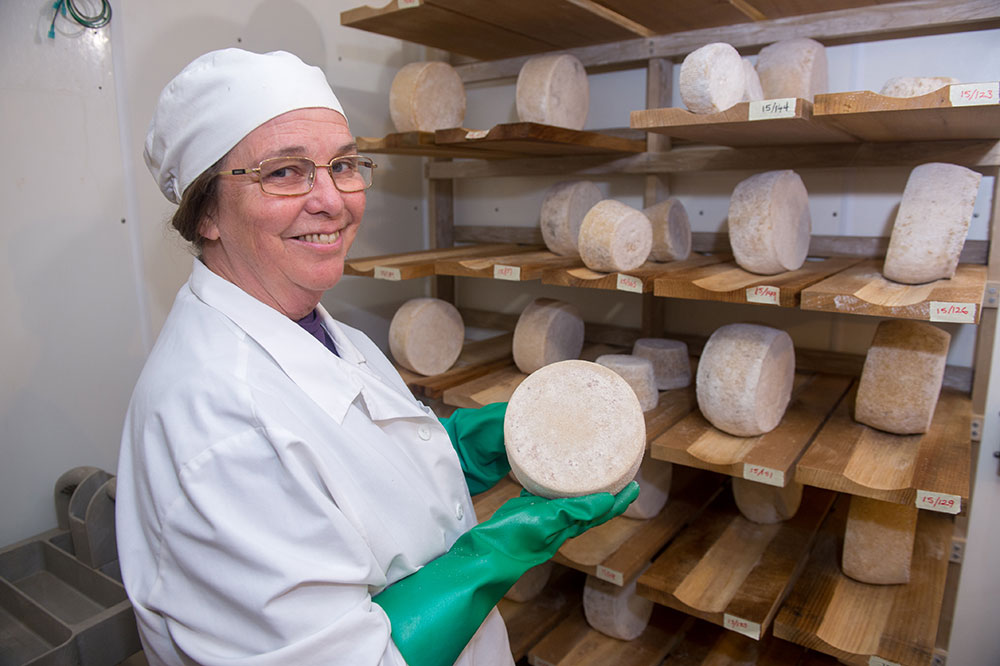Unlocking the Keys of Artisanal Cheese Making: A Detailed Do It Yourself Overview
In the realm of culinary craftsmanship, artisanal cheese making stands as a testament to the delicate balance in between practice and innovation. As we embark on this trip to debunk the art of producing elegant cheeses, we are faced with a tapestry of secrets and abilities waiting to be unwinded.
Choosing the Right Milk
When getting started on the journey of artisanal cheese making, the selection of milk plays a critical function in figuring out the top quality and qualities of the final product. The kind of milk chosen impacts the flavor, texture, and overall profile of the cheese.
When selecting milk for cheese making, it is essential to take into consideration the fat content. Higher fat web content in milk can lead to a creamier and richer cheese, while lower fat material might result in a drier and stronger texture. In addition, the source of the milk, whether from cows, goats, lamb, or buffalo, adds distinct tastes and characteristics to celebrity (Floridia Cheese Melbourne). Each sort of milk brings its very own subtleties, enabling a variety of cheese selections to be crafted based upon the selected milk. Ultimately, the option of milk is an essential decision that establishes the structure for an effective artisanal cheese-making endeavor.
Culturing and Coagulating
To launch the cheese-making procedure, the critical steps of culturing and coagulating should be thoroughly carried out to transform milk into curds and whey. Culturing entails presenting advantageous germs to the milk, which then begins the fermentation process. These microorganisms transform lactose (milk sugar) right into lactic acid, developing the acidic atmosphere required for coagulation. The kind of culture made use of can dramatically influence the taste, structure, and ripening of the last cheese product.

The timing and temperature control during culturing and coagulation are essential aspects that affect the last outcome of the cheese. Proper execution of these actions is necessary to make sure the preferred structure, flavor, and uniformity of the artisanal cheese being created.
Draining Pipes and Pressing Curds
After the milk healthy proteins have actually coagulated and the curds have actually been reduced to release whey, the next critical action in artisanal cheese making involves draining and pushing the curds to achieve the wanted texture and consistency of the last cheese product. Draining is the process of dividing the curds from the whey. This can be done by transferring the curds into a cheesecloth-lined colander or mold and permitting the whey to drain off naturally. The time for draining pipes can differ depending on the sort of cheese being made and the wanted moisture web content.
As soon as the curds have completely drained pipes, the next action is pushing. Pushing helps get rid of any continuing to be whey and compacts the curds to create a solid cheese wheel. Pressing can be done utilizing specialized cheese presses that apply consistent and gentle stress over a duration of time. The period and pressure used during pushing will influence the last texture of the cheese, from creamy and soft to tough and company. Correct draining and pushing are essential actions that dramatically influence the top quality and qualities of the artisanal cheese being created.
Aging and Flavor Strategies
Carrying out careful aging and flavor strategies is critical in enhancing the deepness and intricacy of artisanal cheeses, raising their taste profiles to beautiful levels click this site of improvement and class. Aging plays a crucial role in developing the unique flavors and appearances that differentiate artisanal cheeses.
Flavoring techniques additionally contribute considerably to the final preference of artisanal cheeses. Cheesemakers may select to introduce extra flavors by integrating ingredients such as natural herbs, seasonings, and even fruits right into the cheese throughout the production procedure. In addition, some cheeses are cleaned or massaged with numerous liquids, such as brine or alcohol, to boost their textures and flavors.
Wrapping and Storing Cheeses

Verdict
In final thought, grasping the art of artisanal cheese making includes meticulously choosing the ideal milk, adhering to accurate culturing and coagulating procedures, draining pipes and pushing curds efficiently, and utilizing numerous aging and flavoring methods. Keep in mind to wrap and keep your cheeses correctly to make sure optimal flavor and texture development.
Each type of milk brings its very own subtleties, permitting for a broad range of cheese ranges to be crafted based on the selected milk.After the milk healthy proteins have actually coagulated and the curds have actually been cut to release whey, the next essential step in artisanal cheese making entails draining pipes and pressing the curds to achieve the wanted texture and consistency of the last cheese product. Many cheeses ought to be covered in wax paper or cheese paper to allow them to take a breath while safeguarding them from drying out. For cheeses that need to continue aging, such as bloomy skins or cleaned skins, guarantee they are stored in Web Site an amazing setting like a cheese cavern or a fridge established to the appropriate temperature level. By paying focus to the wrapping and storage of artisanal cheeses, cheese manufacturers and enthusiasts can preserve the integrity of these delicacies and fully appreciate their intricate tastes.